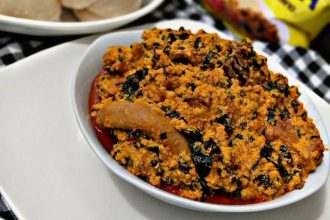Africa, a continent rich in culture and history, offers a gastronomic adventure as diverse as its landscape. Each region boasts unique ingredients, cooking techniques, and flavors that reflect its history, traditions, and environmental conditions. African cuisine, often underrepresented on the global stage, provides a cornucopia of tastes ranging from savory stews and grilled meats to spicy sauces and refreshing beverages. This exploration delves into ten of the most delicious and beloved African dishes, highlighting their origins, ingredients, preparation methods, and cultural significance.
Top 10 Most Delicious African Food In Africa
1. Jollof Rice (West Africa)
Origins and Cultural Significance
Jollof rice, a vibrant and flavorful one-pot dish, is a staple across West Africa. Its origins are debated among countries like Nigeria, Ghana, Senegal, and others, each claiming their version is the best. This dish is central to many celebrations and gatherings, symbolizing unity and festivity.
Ingredients and Preparation
The basic ingredients of Jollof rice include long-grain parboiled rice, tomatoes, onions, and bell peppers. The key to its flavor lies in the tomato sauce, which is often made with pureed tomatoes, red bell peppers, onions, garlic, and a blend of spices like thyme, bay leaves, and sometimes scotch bonnet peppers for heat.
Preparation Steps:
- Tomato Base: Blend tomatoes, red bell peppers, onions, and scotch bonnets (if using) into a smooth mixture.
- Frying the Base: Heat oil in a large pot, add sliced onions and cook until soft. Add the tomato mixture and fry until the oil separates from the sauce.
- Adding Rice: Add washed rice to the pot and stir to coat each grain with the sauce.
- Simmering: Pour in chicken or vegetable broth, season with salt, and cover to cook on low heat until the rice is tender and has absorbed all the flavors.
- Finishing Touches: Fluff the rice with a fork and sometimes garnish with sliced vegetables or cooked meats.
Variations
Each country has its variation of Jollof rice. Nigerian Jollof is often spicier with a smoky flavor, while Ghanaian Jollof might use basmati rice for a different texture. In Senegal, the dish is known as “Ceebu Jën” and traditionally includes fish.
Mountain Town in Italy Has Beautiful Views and Tasty Food
2. Tagine (Morocco)
Origins and Cultural Significance
Tagine is both a dish and the name of the conical clay pot used to cook it. This slow-cooked stew, originating from the Berber people of North Africa, is a cornerstone of Moroccan cuisine. It’s named after the earthenware pot in which it’s cooked, designed to retain moisture and flavor.
Ingredients and Preparation
A tagine can feature a variety of ingredients, including meats like lamb, chicken, or beef, combined with vegetables, dried fruits, and nuts. Common spices include cinnamon, cumin, coriander, and saffron.
Preparation Steps:
- Meat and Marinade: Marinate meat with spices such as ginger, paprika, cumin, and a bit of olive oil.
- Browning: Heat the tagine pot and brown the meat with onions and garlic.
- Adding Vegetables: Add vegetables like carrots, potatoes, and zucchini, along with dried fruits such as apricots or raisins.
- Simmering: Pour in broth or water, cover, and let it simmer on low heat for several hours.
- Garnishing: Before serving, garnish with fresh herbs like cilantro or parsley and sprinkle with toasted almonds.
Variations
Tagines vary widely: some are sweet, incorporating prunes and honey, while others are savory with olives and preserved lemons. Chicken with preserved lemon and olives is a classic Moroccan favorite.
3. Bunny Chow (South Africa)
Origins and Cultural Significance
Bunny Chow, often simply called “bunny,” is a South African fast food dish with Indian roots. It originated in the Indian community of Durban and consists of a hollowed-out loaf of bread filled with curry. It’s a popular street food, known for its hearty and flavorful profile.
Ingredients and Preparation
Typically, Bunny Chow is made with a spicy curry featuring meat (chicken, lamb, or beef) or beans for a vegetarian option.
Preparation Steps:
- Curry Preparation: Cook onions, garlic, ginger, and a blend of spices like turmeric, cumin, coriander, and curry leaves until fragrant.
- Adding Protein: Add the chosen protein (meat or beans) and tomatoes, and cook until tender.
- Creating the Bread Bowl: Cut a loaf of bread in half and hollow out the center to create a bowl.
- Assembling: Fill the hollowed bread with the hot curry and serve with the removed bread pieces for dipping.
Variations
The curry filling can be customized with different levels of spice and types of meat or legumes. Some versions also include vegetables like potatoes and peas.
Discover Hidden Treasures with Roadside Revelations in Street Food
4. Piri Piri Chicken (Mozambique)
Origins and Cultural Significance
Piri Piri chicken, also known as peri-peri or pili pili, is a spicy dish popular in Mozambique and Angola. The dish’s name comes from the Swahili word for “pepper.” It reflects the Portuguese influence in the region, as the Portuguese settlers introduced the small, fiery piri piri chili to African cuisine.
Ingredients and Preparation
The marinade and basting sauce, made with piri piri chilies, lemon, garlic, and paprika, are the heart of this dish.
Preparation Steps:
- Marinade: Blend piri piri chilies, garlic, lemon juice, olive oil, paprika, and other spices to create a marinade.
- Marinating Chicken: Coat the chicken pieces in the marinade and let them sit for several hours or overnight.
- Grilling: Grill the chicken over medium heat, basting with more marinade until fully cooked.
- Serving: Serve with sides like rice, grilled vegetables, or a fresh salad.
Variations
While chicken is the most common protein, the piri piri marinade can also be used for seafood, particularly shrimp.
5. Injera with Doro Wat (Ethiopia)
Origins and Cultural Significance
Injera is a sourdough flatbread that is a staple in Ethiopian cuisine, often served with a variety of stews known as wats. Doro Wat, a spicy chicken stew, is among the most famous and is a central dish during Ethiopian holidays and festivals.
Ingredients and Preparation
Injera:
- Made from teff flour, it has a slightly sour taste due to fermentation.
- The batter ferments for a few days before being cooked on a large, flat griddle.
Doro Wat:
- Chicken, hard-boiled eggs, and a rich, spicy sauce made from berbere spice mix and niter kibbeh (clarified butter infused with spices).
Preparation Steps:
- Injera: Mix teff flour with water and let it ferment for several days. Pour the batter onto a hot griddle and cook until bubbly and set.
- Doro Wat: Sauté onions, garlic, and ginger in niter kibbeh. Add berbere spice, followed by chicken pieces, and cook until tender. Finish by adding hard-boiled eggs.
- Serving: Place the Doro Wat on a large piece of injera, tearing off pieces of the bread to scoop up the stew.
Variations
Other popular wats include Siga Wat (beef stew) and Shiro Wat (chickpea stew), which are often served with injera as well.
6. Bobotie (South Africa)
Origins and Cultural Significance
Bobotie is a quintessential South African dish with a history that dates back to the Dutch colonists in the 17th century. It blends influences from Indonesian, Dutch, and local Cape Malay cuisines, making it a unique representation of South Africa’s culinary heritage.
Ingredients and Preparation
Bobotie consists of spiced minced meat baked with an egg-based topping. Common spices include curry powder, turmeric, and bay leaves.
Preparation Steps:
- Meat Mixture: Sauté onions, garlic, and ground meat with curry powder, turmeric, and soaked bread for moisture.
- Flavoring: Add raisins, chutney, and lemon juice for a balance of sweet and savory.
- Baking: Transfer the mixture to a baking dish, top with a mixture of beaten eggs and milk, and bake until the top is set and golden.
- Serving: Often served with yellow rice, sambals, and chutney.
Variations
Some versions incorporate nuts like almonds, or additional fruits like apples, to add texture and flavor complexity.
7. Nshima with Ndiwo (Zambia)
Origins and Cultural Significance
Nshima, a staple food in Zambia, is similar to other African staples like Ugali in East Africa or Fufu in West Africa. It is a thick porridge made from maize flour, often served with a variety of relishes known as ndiwo, which can include vegetables, meat, or fish.
Ingredients and Preparation
Nshima:
- Made from maize flour and water.
Ndiwo:
- A diverse range of stews and sauces using vegetables like pumpkin leaves, spinach, and proteins like chicken, beef, or fish.
Preparation Steps:
- Nshima: Boil water, slowly add maize flour, and stir continuously until it thickens to a smooth, dough-like consistency.
- Ndiwo: Sauté onions, tomatoes, and garlic, add greens or meat, and cook until tender. Season with salt and other local spices.
- Serving: Form nshima into small balls and serve with a generous portion of ndiwo.
Variations
Nshima can also be made with cassava or sorghum flour in some regions, and ndiwo varies widely based on available ingredients and personal preferences.
8. Pounded Yam with Egusi Soup (Nigeria)
Origins and Cultural Significance
Pounded yam and egusi soup are central to Nigerian cuisine, often served during special occasions and family gatherings. Pounded yam is smooth and stretchy, made from boiled yams, while egusi soup features melon seeds and leafy greens, providing a rich and nutritious meal.
Ingredients and Preparation
Pounded Yam:
- Made from boiled yams pounded until smooth.
Egusi Soup:
- Made with ground melon seeds, leafy greens like spinach or bitterleaf, and a mix of meats or fish.
Preparation Steps:
- Pounded Yam: Boil yams until soft, then pound or blend until smooth and elastic.
- Egusi Soup: Sauté onions and ground melon seeds, add meat or fish, and cook until tender. Add leafy greens and continue cooking until wilted and well incorporated.
- Serving: Serve pounded yam with a generous portion of egusi soup, using pieces of yam to scoop up the soup.
Variations
The greens in egusi soup can vary, and some recipes include additional ingredients like crayfish or stockfish for extra flavor.
9. Koshari (Egypt)
Origins and Cultural Significance
Koshari is a beloved Egyptian street food that combines rice, lentils, pasta, and a spicy tomato sauce, topped with crispy fried onions. It’s a hearty, vegetarian dish with a history dating back to the 19th century, reflecting Egypt’s multicultural influences.
Ingredients and Preparation
The dish typically includes rice, lentils, macaroni, chickpeas, a tangy tomato sauce, and fried onions.
Preparation Steps:
- Base Layers: Cook rice, lentils, and pasta separately.
- Tomato Sauce: Sauté onions and garlic, add tomato paste, and spices like cumin and coriander, and simmer until thickened.
- Fried Onions: Thinly slice onions and fry until crispy.
- Assembling: Layer rice, lentils, and pasta, top with tomato sauce, chickpeas, and fried onions.
- Serving: Often served with additional vinegar-based hot sauce.
Variations
Koshari can be customized with different types of pasta or additional spices in the tomato sauce, according to personal taste.
10. Bunny Chow (South Africa)
Origins and Cultural Significance
Bunny Chow, often simply called “bunny,” is a South African fast food dish with Indian roots. It originated in the Indian community of Durban and consists of a hollowed-out loaf of bread filled with curry. It’s a popular street food, known for its hearty and flavorful profile.
Ingredients and Preparation
Typically, Bunny Chow is made with a spicy curry featuring meat (chicken, lamb, or beef) or beans for a vegetarian option.
Preparation Steps:
- Curry Preparation: Cook onions, garlic, ginger, and a blend of spices like turmeric, cumin, coriander, and curry leaves until fragrant.
- Adding Protein: Add the chosen protein (meat or beans) and tomatoes, and cook until tender.
- Creating the Bread Bowl: Cut a loaf of bread in half and hollow out the center to create a bowl.
- Assembling: Fill the hollowed bread with the hot curry and serve with the removed bread pieces for dipping.
Variations
The curry filling can be customized with different levels of spice and types of meat or legumes. Some versions also include vegetables like potatoes and peas.
Conclusion
African cuisine offers an incredible array of flavors, ingredients, and cooking techniques that reflect the continent’s rich cultural heritage and diverse environments. Each dish, from the spicy Jollof rice of West Africa to the hearty Bunny Chow of South Africa, tells a story of tradition, innovation, and community. Exploring these ten delicious African foods is not just a culinary journey but also a celebration of Africa’s vibrant and dynamic food culture. Whether enjoyed at a festive gathering or a casual street food market, these dishes provide a taste of Africa’s soul, one bite at a time












